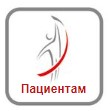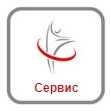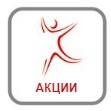Usefulness of Measurement of Paravertebral Muscle Function Using 3D-NEWTON®
Nami Han, M.D., Hyun Dong Kim, M.D.,
Dong Seok Lee, M.D., JoonMyoungYoo, M.D Department of Physical Medicine and Rehabilitation, Pusan Paik Hospital,
Inje University College of Medicine
ABSTRACT
Usefulness of Measurement of Paravertebral Muscle Function Using 3D-
NEWTON®
Objective: To evaluate the validity of measuring paravertebral muscle function with 3D- NEWTON® by assessment of correlation among Biodex and surface EMG.
Method: Nineteen healthy adults were participated. The function of their paravertebral muscle was measured by three ways. By 3D-NEWTON® the maximum enduration time was measured by second when 3D-NEWTON® was fowardly inclined for the extensor function, and backwardly inclined for the flexor function. By surface EMG maximum muscle activity was obtained from eractorspinae and rectus abdonimis during 3D-NEWTON®measurement. Maximum muscle activity was the mean activity of 10 seconds when the root mean sequared firing data was highest. By Biodex® peak torques of extensor and flexor were measured by isometric exercise. The correlation coefficiencies among data from 3D-NEWTON®, surface EMG and Biodex® were calculated using the Spearman correlation coefficiency. These data were analyzed statistically using SPSS v13.0.
Results: The data from surface EMG and Biodex® were statistically correlated when measured for flexor function, but for extensor lesser correlation statistically. In case of 3D-NEWTON®, the correlation coefficiency with Biodex was 0.499(p=0.054), with surface EMG was 0.534(p=0.019) when measured for extensor function. In the same way, the correlation coefficiency with Biodex® was 0.600(p=0.007), with surface EMG was 0.510(p=0.026) for flexor function.
Conclusion: 3D-NEWTON® was a usefull measuring method of paravertebral muscle function, so it can give helpful information when treating people have diseases associated lumbar spine.
Key Words : Paravertebral muscle, Muscle function, Biodex, 3D-NEWTON, Muscle power 3D-NEWTON® used in this study, which supports the spine strongly and stabilizestransversesabdominis&multifidus, was designed for treatment, rehabilitation and prevention of spinal disease. 3D-NEWTON®has been already widely used in clinical practice because it positively affects spinal stabilization by training the spinal muscles three-dimensionally through changes in body position in all range of gravity we experience. In addition, it promotes proprioceptive function to activate low back muscles, controlling motor and sensory nerves in lumber stabilization and relieving spinal instability, and activates the sensory-motor system for the low back, resulting in successive treatment and effective prevention of low back pain. It has been used in analysis and evaluation of pre- and post-treatment spinal balance as well as in exercise therapy of transversesabdominis&multifidus in the disc; however it has not been cleared whether the measurement result is correlated with that of EMG or isometric exercise machine acknowledged as valid evaluation of paravertebral muscles. Thus, it examined the reliability of muscle power assessment of 3D-NEWTON® in people without low back pain, compared to Biodex and surface EMG evaluating isokinetic muscle power, in order to evaluate the validity of measuring paravertebral muscle function with 3D-NEWTON®.
One in life style of sitting on the floor has ever experienced low back pain and it is caused by wrong posture, imbalance of paravertebral muscles and ligaments due to abdominal obesity, mechanical low pain and spinal instability by excessive load, radiculopathy (also known as disc) that the protruded disk suppresses the anterior nerve root, facet joint syndrome due to trauma or degenerative arthritis, spinal stenosis that the spinal cord is suppressed by narrowed vertebral canal due to radiculopahty or degenerative changes, and so on.
Spinal stabilization, one of treatments for chronic low back pain, has been widely applied in prevention and rehabilitation of musculoskeletal disorders and improvement of activity of daily living (ADL). For spinal stabilization, it properly controls external forces on the spinal to reduce repeated microtrauma in the interspinal disk, small joints and adjacent tissues, curing the damage and making stable movement of the spine. Spinal stabilization is determined by 3 elements; passive spinal structures (spinal column), active paravertebral muscles (spinal muscles), and neural control. When it is difficult to maintain spinal stability only by spinal structures due to improper spinal alignment or excessive load, transversesabdominis&multifidus around the spine are contracted, contributing to spinal stability. If such muscles do not work appropriately, it may cause acute or chronic low back pain and spinal instability.
CENTAUR®, used in spinal stabilization treatment, is a 3D spatial rotation exercise program stabilizing spinal structures through strengtheningtransversesabdominis&multifidus, that the patient can make spinal rotation through computer without his movement.
3D-NEWTON® in this study is a machine with biofeedback, for the mentioned spinal stabilization exercise through spatial rotation. Biofeedback refers to the process converting physiological signals such as blood pressure, brain wave, EMG, skin resistance and body temperature into audio-visual signals and informing to the subject. Thus, the subject can recognize his own status and conditions on a given task through audio or visual information, thereby improving task performance. Visual biofeedback takes an important part in neuro-muscular control and in improving motion accuracy. Where such feedback is blocked, it leads to muscular coactivation and increased joint stiffness. In addition, repeated feedback control is engaged in feedforward control and improving motion accuracy. Thus, 3D-NEWTON® controls improper alignment of the spine and adjacent soft tissue and activation of unintended muscles due to wrong posture, through biofeedback, thereby expecting many positive effects such as greatly reduction ofpain, activation of sensory-motor nerves, stimulation of the proprioceptive sense and development of biofeedback for sensory-motor system and muscle power.
To determine whether it is effective in treatment of low back pain, it should measure paravertebral muscle function before and after application. BIODEX and surface EMG have been commonly used in evaluating such function. Those measure muscle power and peak torque of paravertebral muscles, and those are objectified data analyzing electric signal of muscles, as an indicator of paravertebral muscle function in the medicine-related area. Both CENTAUR® and 3D- NEWTON® are used in measuring pre- and post-treatment paravertebral muscle function to measure the therapeutic effect and to make an indicator of that function, however, the correlation with proved Biodex and surface EMG has not been studied yet.
Thus, it applied 3D-NEWTON®, surface EMG and Biodex in adults without low back pain and measured paravertebral muscle function to compare the results, in order to assess correlation among those.
Subjects and Methods
- Subjects
It studied 19 healthy students in College of Medicine or Department of Physical Therapy, Inje University, who were over 18 years old, who expressed voluntary participation, and who agreed with the written content of Institutional Review Board (IRB)/Ethics Committee. It recruited volunteers who had never experienced any spinal disease-related symptom or diagnosed with any spinal disorder. It performed x-ray, blood test and EMG and excluded volunteers with abnormal findings (Table 1). There were 19 male subjects, with mean age of 22.7.
- Methods
- Assessment of Spinal Stabilization using 3D-NEWTON®
It measured the degree of spinal stabilization of individual subjects in test modes of 3D- NEWTON®. Basically, a subject was asked to stand on 3D-NEWTON® and the tester fixed his legs and asked the subject to make a stable erect posture, not to lean the occipital region backward. Then, the subject was tilted at a 45° angle forward and it measured the maximum enduration time by second (Fig 1). During measurement, the subject could correct his posture through visual feedback and it measured the time until the alarm sounded for 5 seconds or more because he could not correct himself even with visual feedback. It excluded the time from an erect posture to 45° anterior tilt posture and even though the alarm sounded, it continued measurement for first 30 seconds when the organs for body balance adapted to this test. Then, the subject was asked to make the original posture and to get off the machine. After a-5 minute break, it repeated measurement by tilting the body in 8 directions; front (0°), rear (180°), right side (90°), left side (90°), middle of front and right side (45°), middle of front and left side (-45°), middle of rear and right side (135°), and middle of rear and left side (-135°) (Fig 2). Where the patient complained of fatigue or pain during measurement, it was immediately stopped.
- Measurement of EMG Activity using Surface EMG
It used Delsys-Trigno Wireless EMG system® to collect surface EMG data and Trigno EMG Sensor® for electrodes. Before 3D-NEWTON®, electrodes were attached to appropriate points in the trunk skin of subjects, referring to the international recommendations, to obtain signals from rectus abdominis and erector spinae muscles. The subject was asked to stand on 3D-NEWTON® and it recorded EMG signals and at the same time, performed the spinal stabilization test in 8 directions. Like 3D-NEWTON®, it recorded EMG signals from the time when the body reached the target angle until this test was terminated. Surface EMG analog signals collected from individual muscles were converted into digital signals and processed in a personal computer through DELSYS EMG Works Aquistion®.
It set 2,000 Hz sampling rate of EMG signals and 20~450 Hz bandwidth. It used RMS (root mean square) to analyze individual EMG signals. Maximum muscle activity was the mean activity of 10 seconds when the root mean squired firing data was highest.
- Measurement of Muscle Power using Biodex
It used BIODEX®to measure muscle power. The subject was asked to sit down in a correct posture and it fixed his pelvis and trunk. It performed isometric measurement twice for flexor and extensor, respectively, and recorded peak torques.
- Data Analysis
The correlation coefficiencies among data from 3D-NEWTON®, surface EMG and Biodex® were calculated using the Spearman correlation coefficiency. These data were analyzed statistically using SPSS v13.0, with a significant level of .05.
Results
- Assessment Results of Spinal Stabilization using 3D-NEWTON®
All of 19 subjects complained of muscular fatigue during this test and asked to stop it so that it could not complete measurement of spinal stabilization in 8 directions. Of them, 12 subjects terminated this test after measuring in 3 directions (0°, 180° and 90°); 4 people in 4 directions (0°, 180°, 90° and -90°); and 3 of them in 2 directions (0° and 180°). For data analysis, it used results in 2 directions (0° and 180°).
In the front and rear directions, the mean times were 335.2(±87.5) (from 187 s to 480 s) and 144.6(±53.0) (from 65 s to 256 s), respectively.
- Measurement Results of EMG Activity using Surface EMG
In the anterior tilt direction, RMS of erector spinae ranged from 73.47%RVC to 107.51%RVC; and that of rectus abdominis from 8.05%RVC to 48.86%RVC. On the other hand, in the posterior tilt direction, RMS of erector spinae varied from 6.85%RVC to 33.42%RVC; and that of rectus abdominis from 69.40%RVC to 169.19%RVC. When measuring tilt
It could simultaneously measure both rector spinae and rectus abdominis in each direction, however, it just used EMG activity of one which was activated greater than another one. That is, it chose EMG activity of erector spinae and rectus abdominis in the anterior and posterior tilt directions, respectively.
- Measurement Result of Muscle Power using Biodex
Peak torques of extensor and flexor were 290.7~438.9Ft-lbs and 51.8~132.30Ft-lbs, respectively.
- Correlation among Measurements
The correlation coefficiency and reliability for extensor function were 0.430 and 0.066 in Biodex® and surface EMG. When measured for flexor function, the correlation coefficiency and reliability were 0.568 and 0.011, respectively, indicating a statistically significant correlation (Table
- (Fig 3).
In case of 3D-NEWTON®, the correlation coefficiency with Biodex was 0.499(p=0.054), with surface EMG was 0.534(p=0.019) when measured for extensor function. In the same way, the correlation coefficiency with Biodex® was 0.600(p=0.007), with surface EMG was 0.510(p=0.026) for flexor function (Table 3, 4) (Fig 4, 5).
Discussion
Low back pain is one of the most common pains that we have ever experienced and is caused by various reasons including anatomical abnormalities or dysfunction of vertebral body, spondylarthritis and disk. It has been known that chronic low back pain secondarily leads to lumbar muscle power weakness, causing reinjury in the lumbo-sacral area, especially flexor and extensor. Generally, various lumbar strenthening exercises have been tried to relieve low back pain in that way. The most essential part in designing and tracing therapeutic effect and patient's progress is to assess the paravertebral muscle function. For that, Biodex which measures a peak torque in isometric or isokinetic methods or EMG activity which is electrophysiologically measured have been widely used.
3D-NEWTON®was developed for spinal stabilization exercise, but it has been used in practical treatment because it could evaluate the degree of stabilization. If 3D-NEWTON® method is highly correlated with existing methods, we could organically perform exercises for chronic low back pain in the process including diagnosis, planning, treatment and determination of treatment effect.
First of all, the correlation between Biodex and EMG measurement has been already proved in several studies. One study assessing elbow joint muscles with Biodex and EMG in 42 healthy adults showed a relatively high correlation in the mean amplitude. It also suggested that the maximum isotonic contraction was relatively low, but correlated with the mean amplitude of EMG. From those results, EMG method did not present a high correlation with Biodex in assessing maximum muscle contraction; however, it indicated that some indicators related to mean amplitude might be useful with a high correlation. In this study, it was thought that the data from EMG and Biodex® might be statistically correlated when measured for flexor function, but for extensor lesser correlation statistically. To supplement this assumption, further study with greater sample size for extensor should be performed.
Indicators measured with 3D-NEWTON® that this study focused on was highly reliable and correlated with indicators of flexor and extensor measured by surface EMG. When compared to indicators by Biodex®, the correlation for extensor was not statistically significant, but not for flexor.
Based on those results, it was thought that 3D-NEWTON® might be useful clinically in measuring paravertebral muscle function. However, there was a limitation that the indicator of extensor function measured by 3D-NEWTON® was not statistically correlated with that measured by other methods. It might be due to small sample size and possible error in measurement by subjects' pain or sense of balance while using 3D-NEWTON®. Therefore, further study with larger sample size should be carried out. In addition, it is required to supplement the detailed measurement rules for 3D-NEWTON® in order to minimize possible measurement errors by subjective termination criteria. There were some people who complained of muscle pain in their femoral region, demonstrating that they might use muscles in that area during measurement. Thus, it is necessary to improve the measurement method to minimize the impact of femoral muscle power.
Conclusion
Indicators for flexor and extensor measured by 3D-NEWTON® was highly correlated with that by surface EMG. In case of Biotex®, it was high correlated for flexor, but not for extensor. It indicated that 3D-NEWTON® might be a useful measuring method of lumbar function in clinical practice. However, the indicator for extensor flexor measured with 3D-NEWTON® was relatively uncorrelated with that by Biodex® and any research on other motions except flexion and extension has not been performed, so further studies are required.












